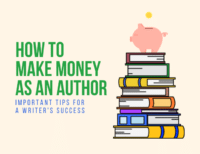Of all the tools writers use to keep their readers engaged and moving forward with the story, pacing in writing is perhaps the most ignored. Often, we don’t think about how we need to control the speed with which we deliver our story—we just get in there and go.

But if you’ve ever run a marathon, or a 10K, or even a 5K race, you know that pacing is important. If you pour it on at full speed right off the starting line and keep that up without variation, you’ll run out of steam and be unable to finish.
You do the same thing to your reader if you don’t vary the pace. Fast or slow, if you don’t provide some variety for your reader, they won’t finish either. So let’s take a closer look at pacing in writing and how it can help you create a better experience for your readers.
What Is Pacing in Writing?
Pacing in writing is simply the way you control the tempo at which your story unfolds. Those tempos can range from lightning fast to leisurely, but should never descend into plodding. And the important thing is to start strong and then use a judicious mix of delivery speeds to pull your reader through the scenes and chapters to the end of your story.
If you think of your story’s pacing like the graph of a good investment, you want to see peaks and valleys as the value of the stocks moves up and down, but overall, the progress should build to an ultimate, climactic summit. The difference is that with a financial investment, you want to see a continuing build, whereas with a story, after the climax, there must be a tension release and a little downtime before possibly ending on another (but lesser) high point.
Start Strong
There is no doubt that grabbing your reader’s interest right out of the gate is crucial. Your story’s opening must accomplish that. This doesn’t mean you have to start at breakneck speed, but it’s important that you select the right speed for your particular story. The opening lines will establish the tone and lay down the baseline for pacing.
The trick, after that, is to vary the speed of delivery at the proper times and in the proper places. Knowing where those proper times and places are largely comes down to the instinct we’ve developed as we’ve read and absorbed story throughout our lifetime. It depends a little, also, on a kind of magic that hovers just outside the scope of this article.
But read on to learn more about the techniques you can use to achieve the variety your readers seek.
5 Tricks to Speed Your Story Up
Even though most of us don’t read out loud and therefore don’t need to plan our inhalations around the words on the page, we still tend to breathe with the flow of the sentences. That being the case, pacing can actually affect the reader’s breathing, which in turn affects his emotional state.
Like I said, pacing in writing is a powerful tool.
When it’s time to pick up the pace, here are a few techniques you can rely on:
- Short sentences. Don’t be afraid to use fragments, even, to convey a sense of speed.
- Just the facts, ma’am. Stick to the bare facts and blur out the scenery as if you’re a movie director, focusing on the tense face and frantic concentration of your character, blocking out unnecessary bits of diversion.
- Keep dialogue to the point. This is not the time for long speeches or elaboration. Get in, get out, get it said.
- Use sensory detail. You want your reader to be inside that moment with your character, experiencing what they are experiencing.
- Read it aloud. As well as hearing how it sounds, this will help you see how it affects your breathing and how it makes you feel to absorb those words.
5 Tricks to Slow Your Story Down
Between your points of high action and fast-paced scenes, you will want some calmer moments that give your readers a chance to catch their breath. This is when your characters have time to talk with each other, reflect, think about the implications of what happened during those action moments, and maybe even go to their quiet place.
Even in the most fast-paced books, it’s essential to sometimes slow it down. Here are a few suggestions for making that happen:
- Longer sentences. This is where you can stretch out and spend a little time with more leisurely sentences. But be careful not to wax on too long. Using longer sentences can actually increase the tension and create suspense. The other danger, of course, is losing focus.
- More background and setting. These are often revelatory scenes, where you uncover plot points and give more background detail.
- Spend more time talking. Now is when your characters can indulge in a lengthy conversation, if called for.
- Engage the stage. In movies and plays, characters use “stage business” to add authenticity to their actions—painting their toenails, cooking a meal, or whatever their character would be logically doing under the circumstances. Giving your character an action also helps backstory go down better.
- Weave in a flashback. This can be a powerful way to slow your story down, but wield it carefully. Let's take a look at the strengths—and dangers—of flashbacks.
Using the Flashback
If a flashback fits well in the scene, you can use it not only to broaden the pace but to reveal more about your character’s formative moments and set things up for future payoffs.
However, don’t use a flashback just for the sake of slowing. It has to be appropriate to the scene and justify its existence by accomplishing one or more of the following objectives:
- Tell the reader something important about the character.
- Clarify the circumstances of the story.
- Contribute to the story’s resolution by supplying a missing detail, a hidden motive, a vital clue, or some other critical piece of information.
The flashback doesn’t have to be long. Sometimes a paragraph, or even a single sentence, is all you need.
In the Words of Porky the Pig
That’s all folks. Almost. I just want to add a few more helpful hints about pacing in writing before you get down to practice.
- Scene changes and POV switches are opportunities to move to a different pace.
- The first sentence of each scene sets the tone, and tone and pace are fundamentally linked.
- Shifts in tone and pace can be facilitated by diverting to a subplot scene.
- Don’t fall into a pattern with pacing. Keep it unpredictable.
- The purpose of chapters is to break up the story and provide pacing.
- Exercise restraint and hold something in reserve for the fastest, most climactic scene.
And most importantly, be patient and stay focused on the finish line. With the skillful application of pacing in writing, you can give readers the variety they crave and keep them riveted in your story.
How about you? Are you aware of the variation in speed as you deliver your story? Do you see how useful this tool can be in writing a terrific story? Tell us about it in the comments.
PRACTICE
Remember that the first sentence of each scene sets the tone, and tone and pace are fundamentally linked. Write the opening paragraphs for two different scenes—one fast-paced and the other slow. Use your own characters and ideas or try one of the following prompts:
Duma and her lover steal a mini-spacecraft and escape a planet held hostage by the evil warlord.
A rattlesnake startles Lila’s horse and she is thrown to the desert floor as the horse gallops away.
Mike hates that his boss is forcing him to fire Janet. She’s the best accountant in the firm.
Remember to use the techniques discussed to achieve the different tones and paces. Write for fifteen minutes. When you are finished, post your work in the comments, and if you post, please leave feedback for your fellow writers!







0 Comments
Trackbacks/Pingbacks